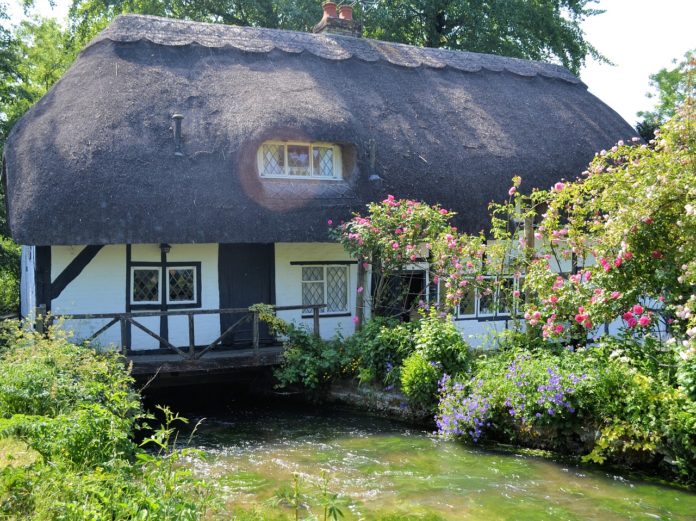Have you always been fond of growing vegetables? Do you spend your time in the backyard watering plants? Is landscaping your passion? Can you see yourself surrounded by amazing colorful flowers? If your answers are YES then you might be interested in changing your backyard into your very own English garden!
You can hire an UK company that is already knowledgeable about English gardens or you can do it by yourself. According to Homegarden.org.uk, one of leading landscaping businesses, an hour of their work costs 40-50 quid. If you do it yourselves following some of the easy steps here, you can save a lot of money…
Space Allocation
So you decided to make your own English garden, but you are wondering: “Where do I start?” The answer is simple plan out your garden. By default, your garden should have very basic rectangular shape, but some modern ones allow for slight curves.
Draw your ideal garden before you start anything, visual representation can go a long way in the planning phase. Make sure to mark paths, plants, veggies and some other important parts of every English garden like a statue, a fountain or maybe even some bird cages. It’s important to have a firm idea before you start actual digging, building or any other work.
Getting the Hands Dirty
When you have planned out your garden, it’s time to start working. You would want to start with walls to separate your garden beds. Most common walls are short nicely trimmed hedges. You can use bricks and other materials as well. It’s entirely up to you. Gardening is an art and you should consider every possible option.
Follow this up with pathways, as it’s important to be able to freely move around without compromising the plants’ soil. Most common paths are made of tiles or bricks, some use natural grass, while others depend on lawn alternatives like creeping thyme or ornamental grass.
Next on the list is planting the plants. It’s important to choose correct plants for your garden. Most English gardens use perennials; Chrysanthemums, Echinacea, Lavender, Black-eyes Susan, Peonies are all good choices. You can choose to keep it simple with gradient of sorts or go all out with a variety of colors.
There should be some form to the way you plant; tall plants should be put in the back side, middle ones in the center and short ones definitely in the front. One or two plants might be placed out of place as to enhance the difference.
When it comes to English gardens, leave no space empty. If there is room to plant, plant! You can leave an entire garden bed for roses for example. They represent tradition and are a wonderful sight in the spring.
Final Steps
After all that planting, there is still something missing to your English garden. In order to complete your vision, you have to put a fountain somewhere, usually in the middle; any type of water is fine though, a pond or even a bird bath…
Another integral piece of your garden should be a statue of some sort. A well placed statue server as a focal point and greatly improves that English garden feeling. Last but not least, you should create some decorative structures. Those add to the functionality of the garden as you can showcase those vines you always wanted.
Taking a long walk in the beautiful garden can be exhausting, make sure to place a bench somewhere accessible. It can be wooden and blend in, or metallic and stand out, the choice is yours. You can also set up some chairs and a table, where you can drink coffee with friends or family.
Additional Ideas
In order to keep some peculiar plants, you need to make a Greenhouse. You can grow some season plants longer; you can even grow plants that don’t grow naturally in your climate… Options are limitless with a well-built greenhouse.
Choose a large part of your garden, and make a lawn of it. You can have your very own private picnic area. You can set up a Pergola to provide some shades while you are at it.
Set up a majestic entrance. It will be aesthetically pleasing and could save your garden from unwanted intruders like pets.
Quick Recap
1. Plan out your garden
2. Set up pathways and walls
3. Plant perennial plants (and some others as well)
4. Place a fountain somewhere
5. Put benches or chairs
6. Make decorative structures and entwine them with climbing plants
7. Decide on a grand entrance







